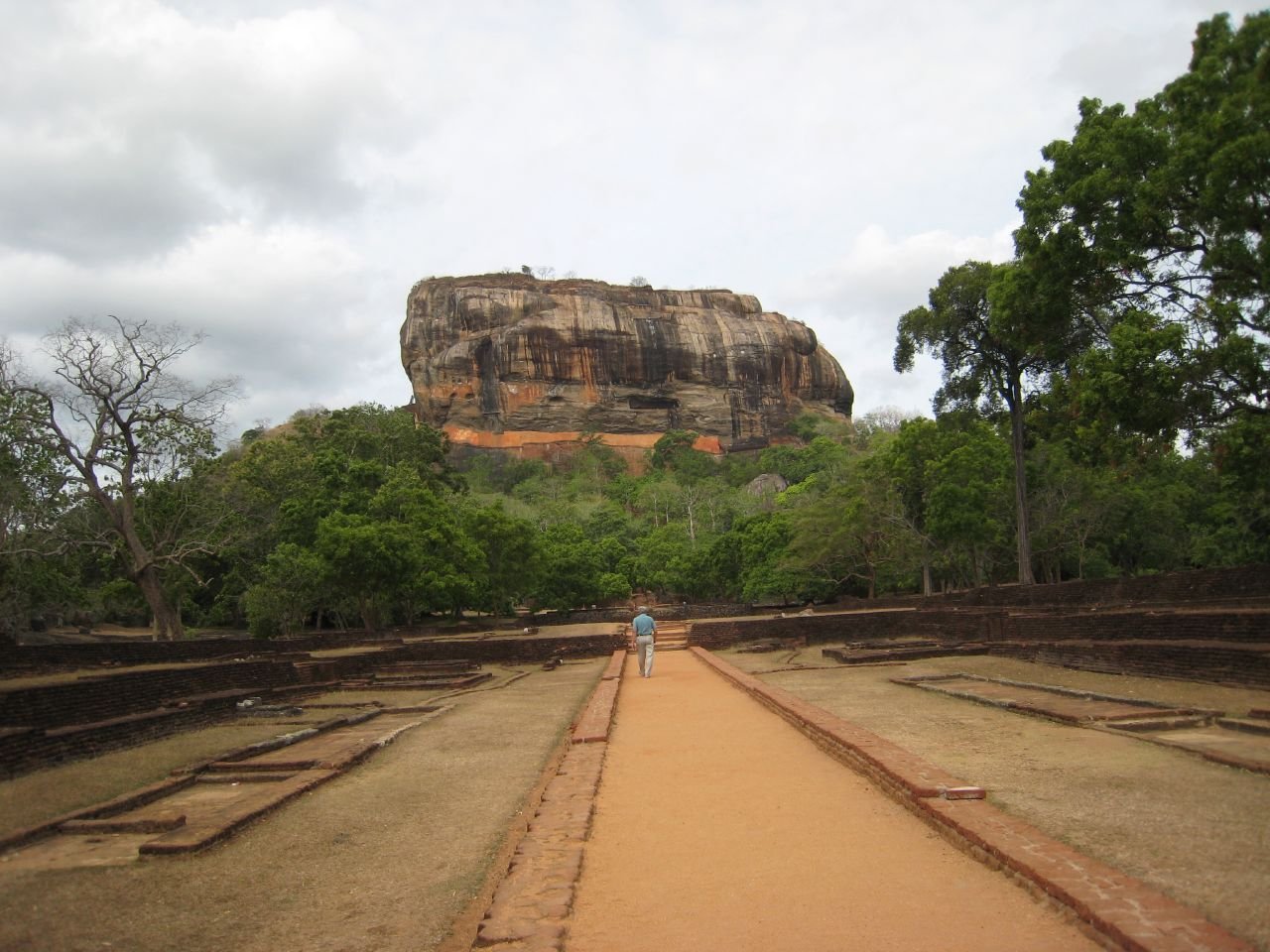Sigiriya (Lion Rock)
Sigiriya is a 170 meters high rock on top of which is a fortress, it is the best example of an ancient Asian city, a magnificent example of Sri Lankan construction. It is listed as a UNESCO World Heritage Site. Sigiriya was built during the reign of King Kasapa (477-495) and at that time was the capital and an impregnable fortress.










General information
This massive red stone monolith, plunging steeply downward on all sides, is visible from everywhere. The rock rises 349 meters above sea level and 180 meters above the surrounding jungle. Sigiriya Fortress is shaped like a crouching lion, the entrance to the huge structure was once located in the mouth of a lion. Today only giant paws remain of this lion, but the outline of the beast still dominates the plain. Halfway to the top of the cliff, a brightly colored image of a procession of maidens has been preserved.
.
The fortress was absolutely impregnable, so that its defenders could withstand any siege. Two thousand years ago hunters settled here, and in the 5th century A.D. Sigiriya became the center of Sinhalese rule in Sri Lanka; its period of prosperity is described in a Ceylonese writing as “a time of violent passions, romantic beauties and superhuman efforts, unparalleled in the bloody Lankan history. Bloody indeed: this beautiful island is still threatened by civil war (it is not without reason that its shape is still compared to a tear).
.
In 459, Dhatusena, a Sinhalese of noble birth, defeated the Tamils who opposed him and founded a new capital, Anuradhapura, in the northwest of the island. Soon he had a son, Kasapa, by his younger wife. But then his elder wife also gave birth to a son, Mogallana, who became the rightful heir to the throne. But Kasapa did not want to accept this. In 477 he seized power and had his father walled up alive. Mogallana, saving his life, fled to the Tamil-populated south of India.
.Kasapa went down in Sri Lankan history as a brutal, ruthless ruler. All his actions were motivated by fear of the return of the rightful heir. Almost immediately after his patricide and seizure of power, he began fortifying the already impregnable Sigiriya Rock and eventually erected a luxurious palace on top of this giant megalith, which became his residence for his entire reign (11 years).
.Even today, it is easy to imagine this cunning ruler sitting on a smooth stone – the “monarch’s throne” – and admiring the luxurious gardens laid out on the plain below. But the surrounding beauty did not please Kasapa; his eyes were constantly fixed on the horizon, where at any moment his deposed brother might appear.
And these fears were not in vain. In 495, Mogallana, burning with vengeance, returned to Sri Lanka with the support of Tamil warriors. Kasapa, to his misfortune, descended the cliff to meet the enemy on his approach. However, the giant elephant on which he was riding was cut off from the main army. Left alone, Kasapa committed suicide by slitting his throat. Mogallana was victorious and proclaimed himself ruler. The capital was again moved to Anuradhapura and the fortress of Sigiriya was consigned to oblivion. It was “taken over” by the jungle, and monks settled in the local caves.
.
Climbing Sigiriya, you can see the once majestic royal pool, the throne, the remains of a luxurious palace, parks and gardens. But keep in mind, the climb up the cliff is quite difficult; even people in good physical shape take 2-3 hrs.
.Open: daily 7.00-18.00. Admission is payable or by single ticket to the Cultural Triangle
.Sigiriya is also known for its magnificent complex of geometric gardens, ponds, fountains and structures.
.
The water garden is a striking example of early hydraulics, it provided the park with surface drainage, erosion control, a cooling system, and various ornamental water features. There was even an artificial lake with a 12 km long dam-boy, and the water gardens had pools, reservoirs and islands surrounding a large pavilion. The water supply of the fountains was well calculated, and they are still in operation today.
